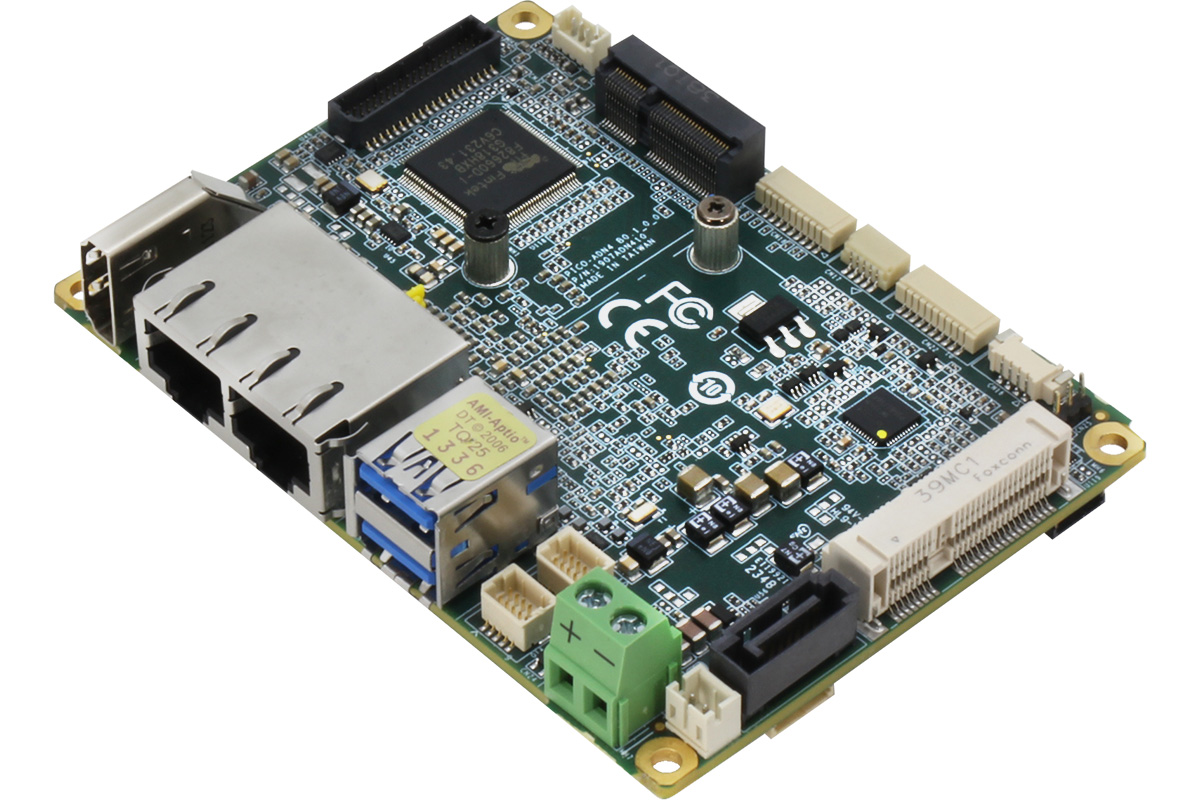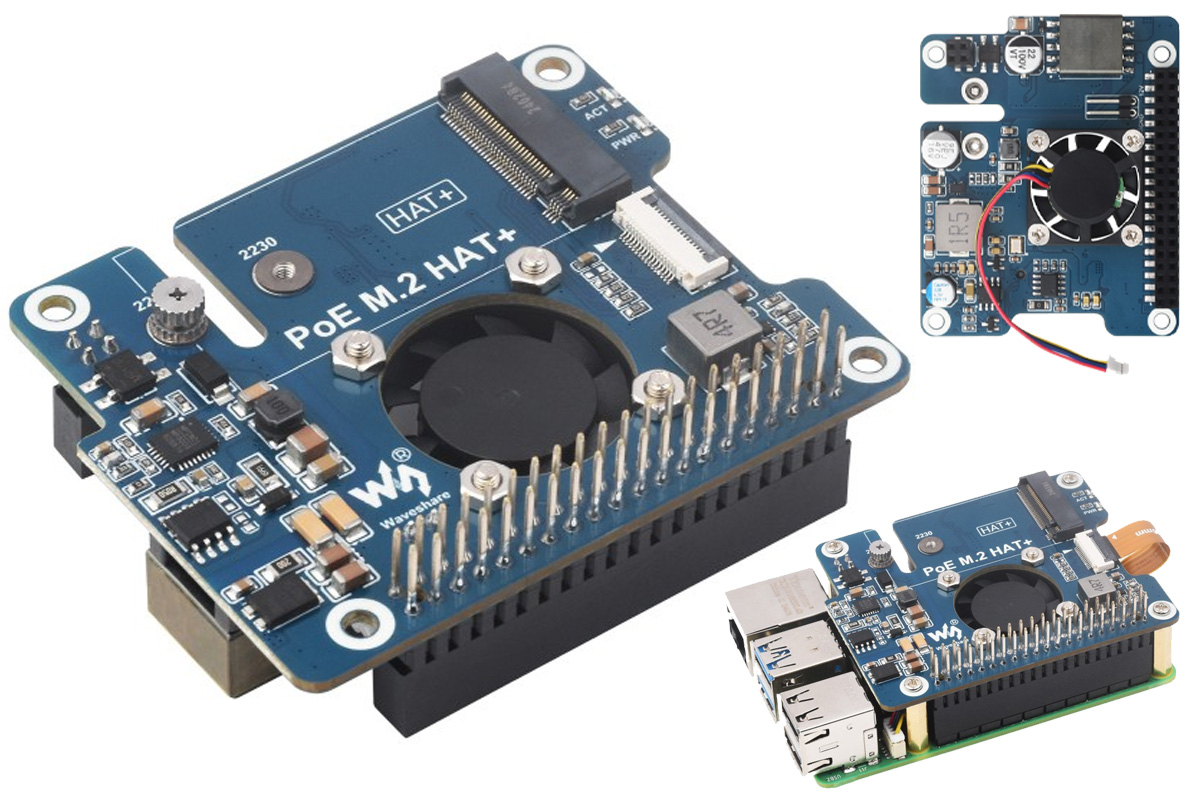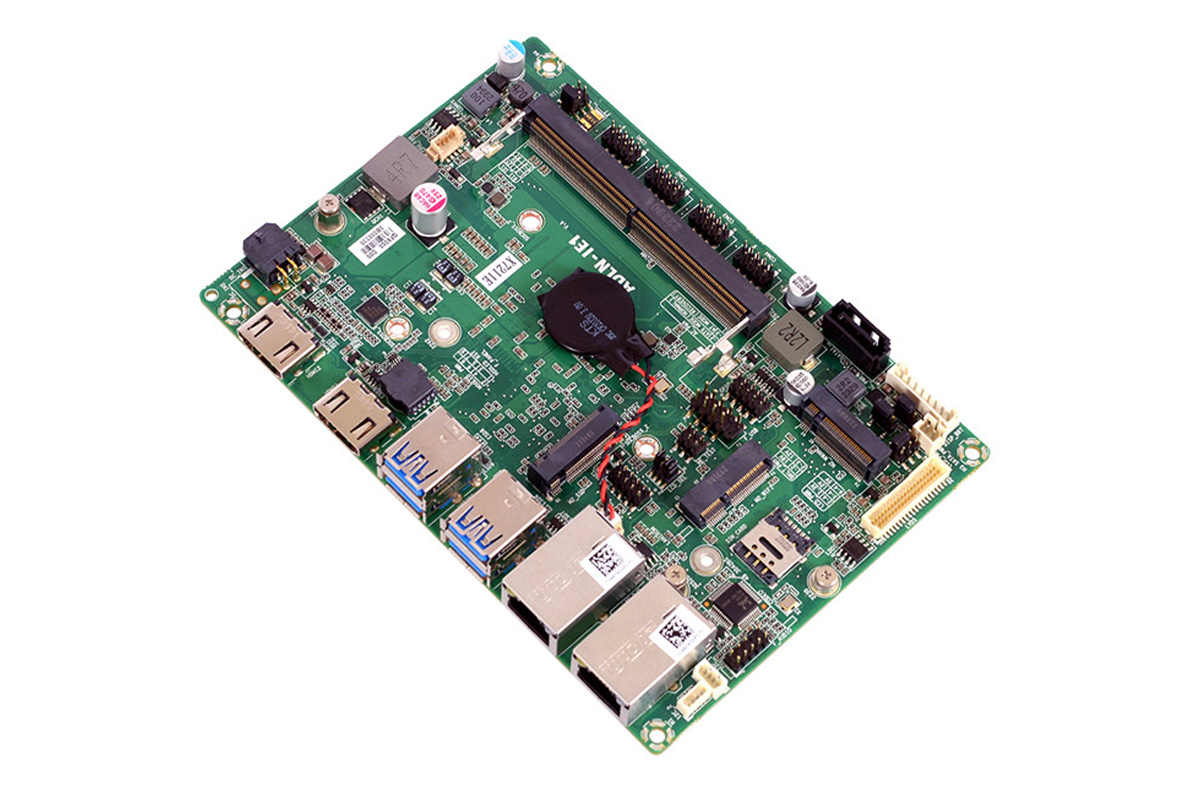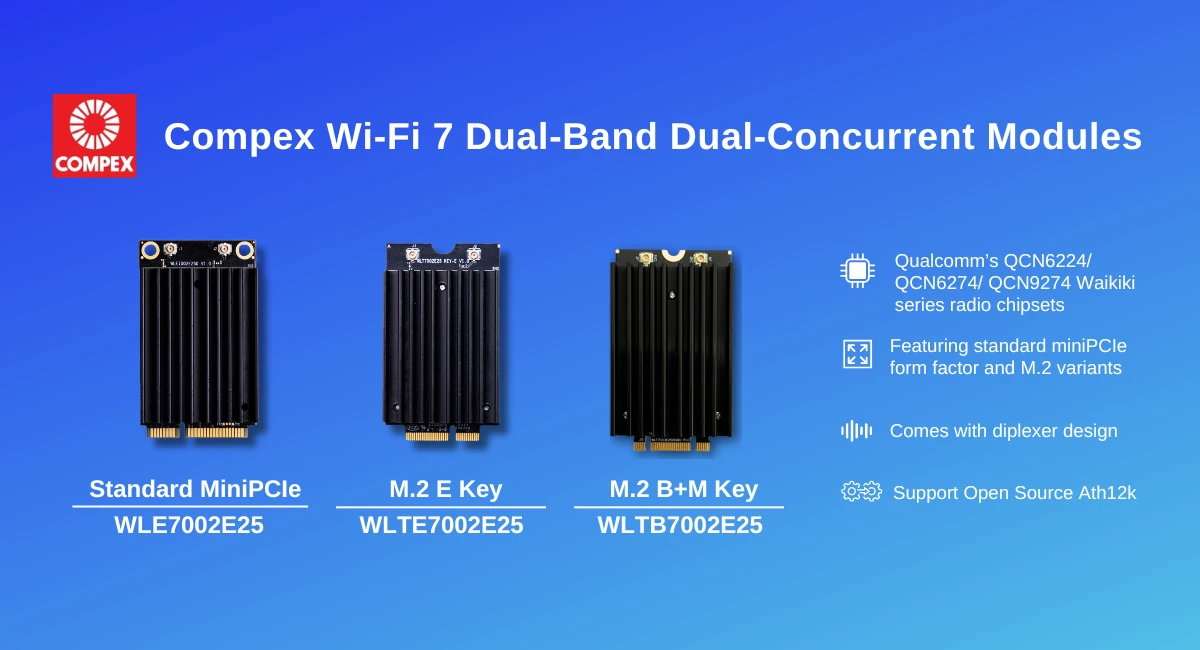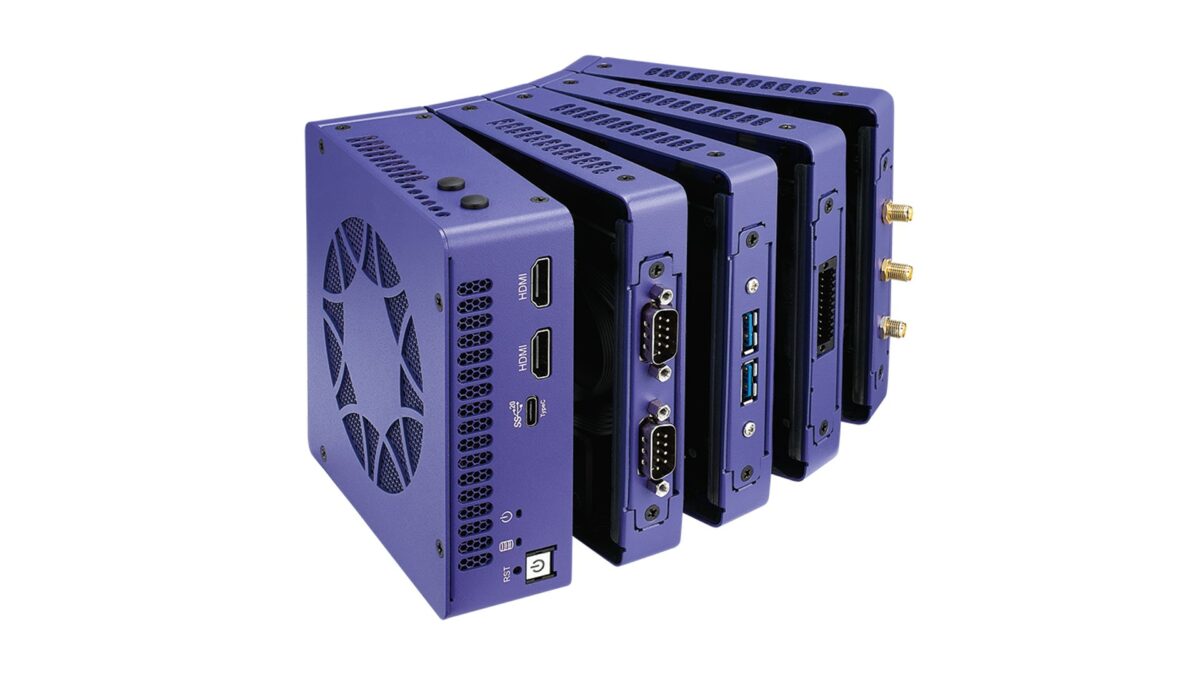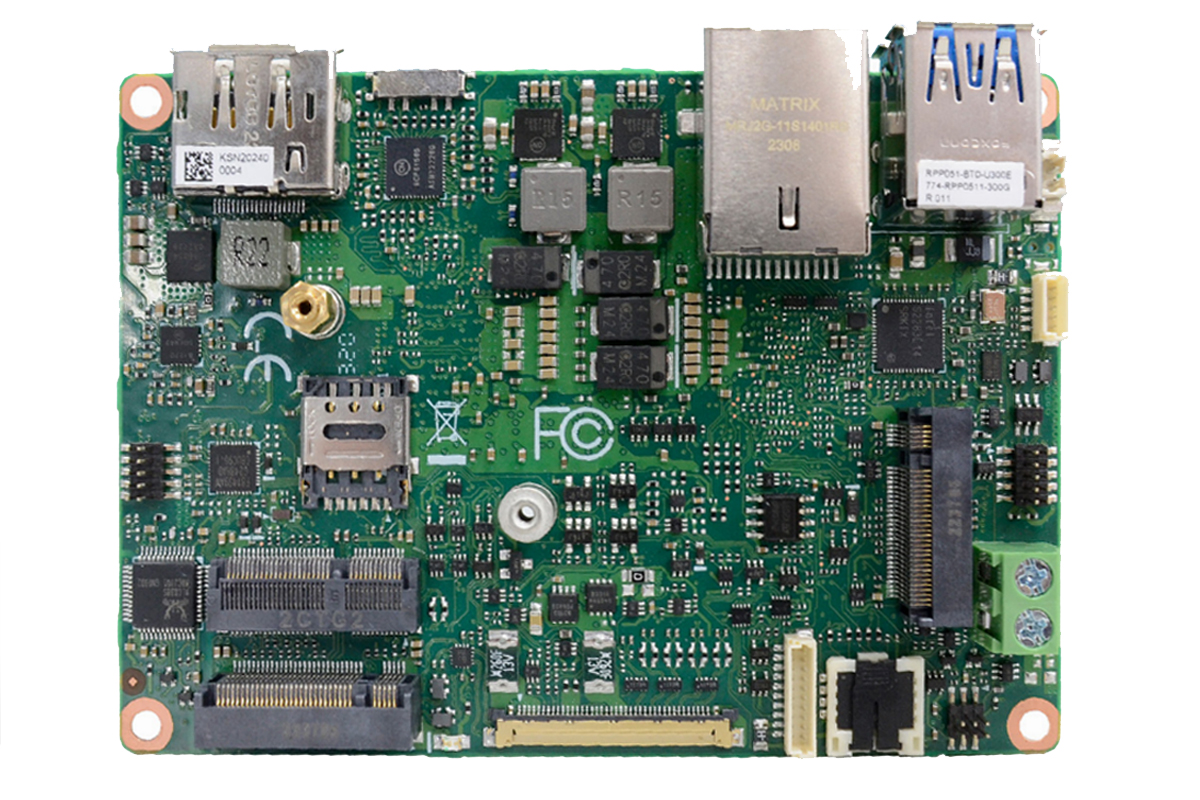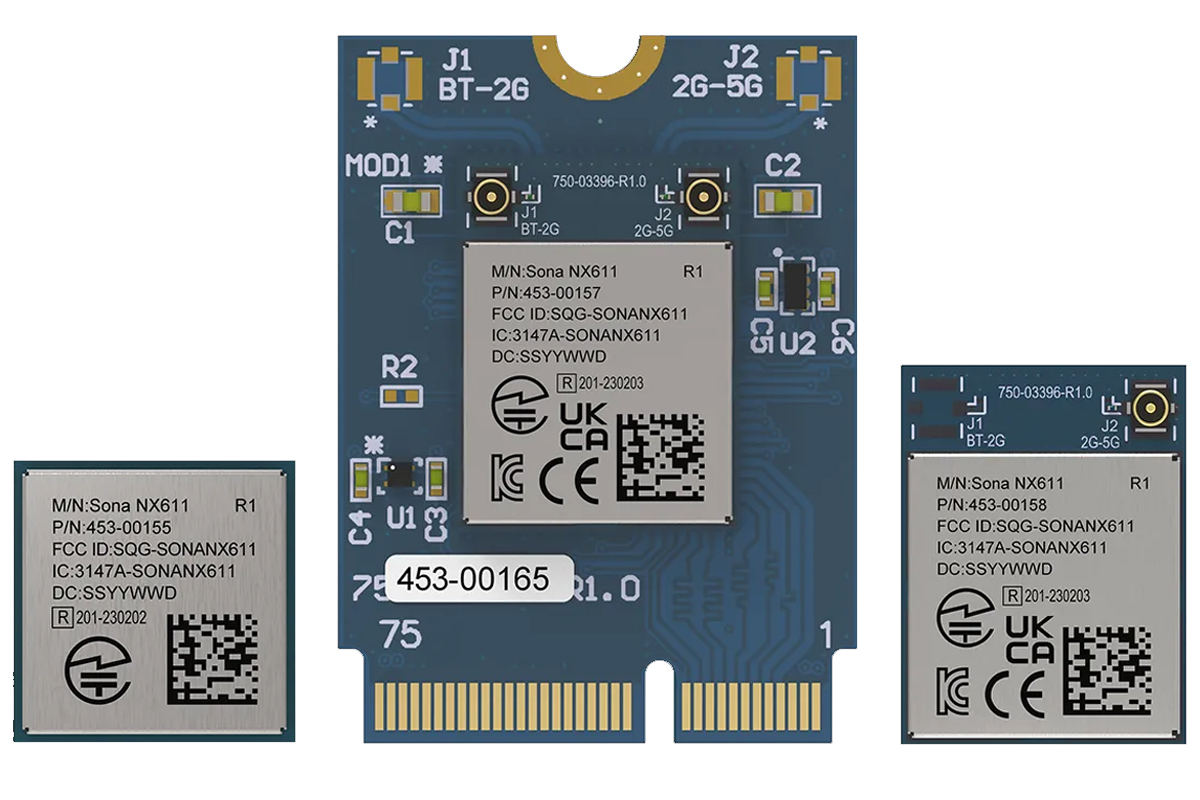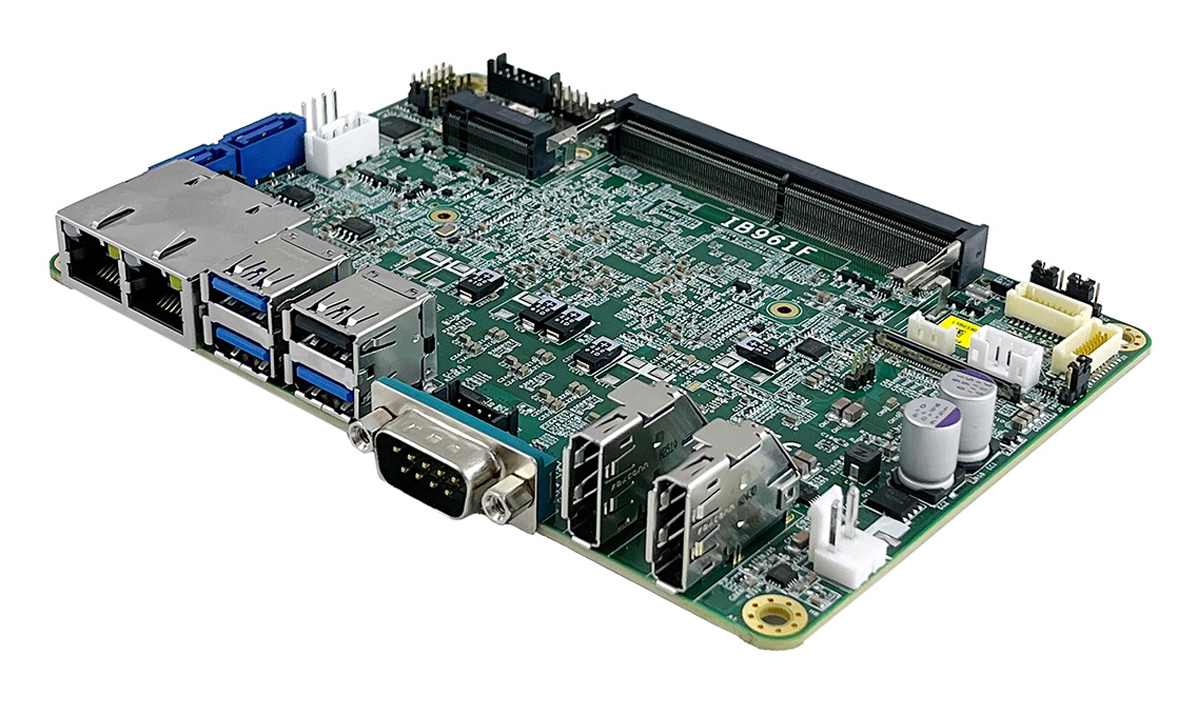AAEON PICO-ASL4 is a fanless, latency-sensitive Pico-ITX single board computer (SBC) built around the Intel Atom x7000RE-series “Amston Lake” SoCs and configurable with up to 16GB of DDR5 memory. The SBC supports dual display outputs via HDMI and LVDS/eDP and features four serial ports: two RS232/422/485 and two RS232. For networking, it provides dual Ethernet connectivity with Intel i226 2.5GbE and Realtek RTL8111H 1GbE controllers, both supporting TSN and TCN. Additionally, it offers a variety of expansion options, including a full-sized mSATA/mPCIe slot and an M.2 2230 E-Key socket for WiFi and Bluetooth. For further connectivity, there are four USB 2.0 ports, two USB 3.2 Gen 2 ports, as well as GPIO and SMBus/I2C headers. AAEON PICO-ASL4 (Rev.B) specifications SoC – Intel Amston Lake (one or the other) Intel Atom x7433RE, 4 cores, 1.5GHz, 9W TDP Intel Atom x7835RE, 8 cores, 1.3GHz, 12W TDP System Memory – Up to 16GB DDR5 […]
Low-cost Raspberry Pi 5 HAT+ combines M.2 socket for NVMe SSD and PoE power input
With a cost of only about $25, Waveshare has recently introduced the PoE M.2 HAT+ for the Raspberry Pi 5, which is much cheaper than the similar N-Fuse PoE HAT that we’ve written about previously. As the name implies, this new Waveshare board supports Power over Ethernet (PoE) and features an M.2 slot to add NVMe SSD storage to the latest Raspberry Pi SBC. This new Waveshare HAT complies with the 802.3af/at standards and can deliver up to 25.5W of power to the Pi 5, enabling both power and network connectivity over a single Ethernet cable. Additionally, it features onboard 5V & 12V header outputs for powering additional devices like cooling fans, and there are also two LEDs for status. A fast storage device and the ability to power the device with ethernet makes this device suitable for applications such as network-attached storage, media centers, and edge computing applications. Waveshare […]
ECS ADLN-IE1S – A 3.5-inch Alder Lake-N industrial motherboard with solid capacitors and 15µ gold contact
ECS Industrial Computer has recently launched the ECS ADLN-IE1S 3.5-inch industrial motherboard built around the Intel Alder Lake-N SoC family. Other than that, the motherboard supports DDR5 memory, 2.5 Gbps Ethernet, and triple display capabilities via a dual HDMI port, and an LVDS port. It also features multiple expansion slots for SSDs and WiFi modules including various I/O options including USB 3.2, serial ports, GPIO, and more. The motherboard is designed for industrial applications, so it has a wide operating temperature range making it suitable for applications including automation, control systems, digital signage, and kiosks. Previously we have written about motherboards designed for industrial applications like the DFI RPS310, the ASRock NUC Ultra 100 motherboards, the Kontron K3931-N mITX, and many others. The main difference is that this new ESC ADLN-IE1S motherboard comes in a 3.5-inch form factor whereas the other comes in a MINI-ITX or MICRO-ATX form factor. ECS ADLN-IE1S […]
Compex unveils new Wi-Fi 7 dual-band dual-concurrent modules: WLE7002E25, WLTE7002E25 and WLTB7002E25 (Sponsored)
Compex Systems (Compex) announces the latest additions to its Wi-Fi 7 modules, WLE7002E25, WLTE7002E25, and WLTB7002E25, expanding its Wi-Fi 7 solution lineup. The updated lineup now includes M.2 variants to its popular dual-band Wi-Fi 7 modules. The new WLE7002E25, one of the first in the industry to feature a standard mini PCIe form factor, promises enhanced wireless performance and reliability at Wi-Fi 6 prices. The similar-sized WLTE7002E25 with an M.2 E Key and WLTB7002E25 with an M.2 B+M Key further broaden the versatility of Compex’s Wi-Fi 7 solutions. Powered by Qualcomm’s QCN6224, QCN6274, and QCN9274 Waikiki series radio chipsets, the new WLE/WLTE/WLTB7002E25 are dual-band dual-concurrent 2.4+5GHz Wi-Fi 7 (802.11be) modules, offering wider signal coverage by transmitting both bands concurrently, reducing latency with Multi-Link Operation (MLO) support, featuring OFDMA and 4096 QAMs. Delivering up to 20dBm per chain, these 2×2 MU-MIMO models are ideal for enterprise, industrial, cybersecurity, transportation, and SMB applications. […]
Vecow TGS-1000 – A fanless, stackable embedded computer with Intel Core Ultra Meteor Lake SoC
The Vecow TGS-1000 Series is an ultra-compact, fanless, stackable embedded computer that includes the TGS-1000 and TGS-1500 models, powered by the latest Intel Core Ultra Metero Lake processors with integrated CPU, GPU, and NPU. It supports up to 96GB DDR5 memory and stackable expansion options for networking, serial, wireless, and more. This series is optimized for edge AI applications, offering up to 14% increased CPU productivity and enhanced graphics capabilities. The TGS-1000 Series offers up to five independent displays through two HDMI and three DP ports. It features a variety of I/O connections, including up to 5 USB 3.0 ports (4x Type-A and 1x Type-C) and one 2.5GbE LAN supporting TSN, making it ideal for vision and automation applications. Its modular design allows flexible expansion for USB, isolated DIO, COM, LAN, or 4G/LTE, suitable for AI, smart retail, office communication, and gaming. The TG-1500 series adds support for MXM graphics […]
DFI RPP051 Pico-ITX SBC features 13th Gen Intel Core embedded SoC from Processor U300E to Intel Core i7-1365UE
DFI RPP051 is a 2.5-inch Pico-ITX SBC built around 13th Gen Intel Core processors ranging from the dual-core Intel Processor U300E to the 10-core Intel Core i7-1365UE. It supports up to 32GB DDR5 SO-DIMM memory and accommodates M.2 NVMe and SATA storage devices. Connectivity options include a 2.5GbE LAN port, DP++ and eDP display interfaces, USB 3.2 Gen 2 and USB 2.0 ports, RS-232/422/485 interfaces, along with I2C and GPIO for expansion. The DFI RPP051 first came to our attention while covering the AAEON PICO-RAP4 which is also an SBC with a Pico-ITX form factor, we have also written about many x86 and Arm Pico-ITX boards including AAEON PICO-MTU4, the AAEON RICO-3568, the GIGAIPC PICO-N97A and many other feel free to check them out if you are looking for compact and powerful SBCs. DFI RPP051 Pico-ITX SBC Specification 13th gen Raptor Lake SoC (one or the other) Intel Core i7-1365UE 10C/12T […]
Ezurio Sona NX611 – An NXP IW611-powered Wi-Fi 6 industrial IoT module
Ezurio, formerly Laird Connectivity, has announced the Sona NX611, a new Wi-Fi 6 module designed for industrial IoT applications. The module uses the NXP IW611 chipset and supports Wi-Fi 6 (802.11ax) and Bluetooth 5.4. It operates in the 2.4 GHz and 5 GHz bands, achieving data rates up to 600 Mbps, and can withstand industrial temperatures from -40°C to +85°C. The Sona NX611 comes in several form factors, including SiP (System-in-Package), M.2 1216 SMT, and M.2 2230 E-Key pluggable options. It is compatible with NXP processors and supports Ezurio’s Linux connectivity stack software and Android OS. The module is under development and is expected to be in mass production by September 2024. It will have global certifications like FCC, ISED, UKCA, CE, and Bluetooth SIG. Previously we have seen the IW611 and IW612 modules were used in the u-blox MAYA-W2 IoT module. We have also written about Laird RM126x LoRaWAN […]
iBASE IB961 3.5-inch SBC features 13th Gen Intel Core processors, dual 2.5GbE LAN, three M.2 sockets
The iBASE IB961 from FORTEC Integrated (previously known as Distec) is a 3.5-inch Single Board Computer (SBC) built around 13th Gen Intel Core processors. The board can support up to 32GB of DDR5-5200 non-ECC memory via 1x SO-DIMM socket and features dual DisplayPort (1.2), eDP, and LVDS interfaces along with dual 2.5GbE Ethernet for connectivity. Additionally, the SBC also includes 3x M.2 slots (M-Key, E-Key, B-Key) for expanded storage and 5G cellular communication. These features make the device useful for applications like automation, edge computing, transportation, digital signage, and kiosks/ATMs. iBASE is well known for its SBCs and mini PCs and previously we have written about their products including the IBASE ISR500 fanless Edge AI computer, the IBASE 3.5-inch SBC with AMD Ryzen Embedded V2000 processor, the IBASE IBR215 Pico-ITX SBC. Additionally, we have written about similar SBCs and Mini PCs with 13th-gen Raptor Lake SoC including the GEEKOM GT13 […]


